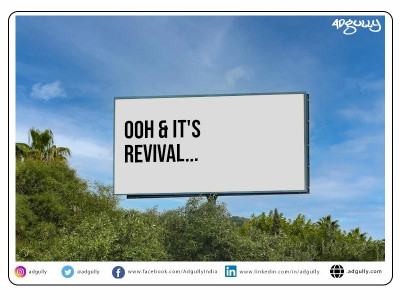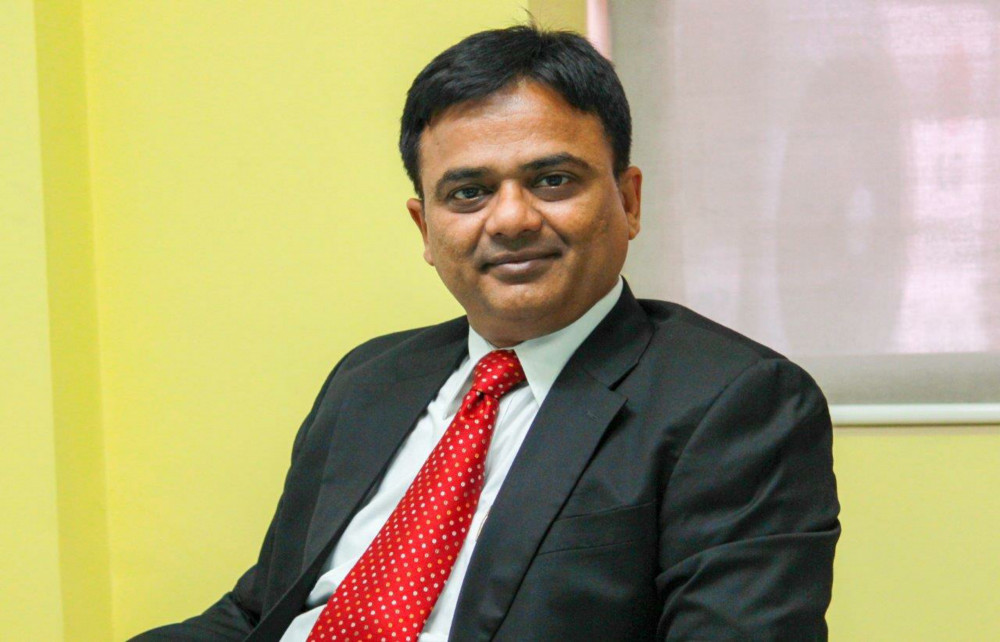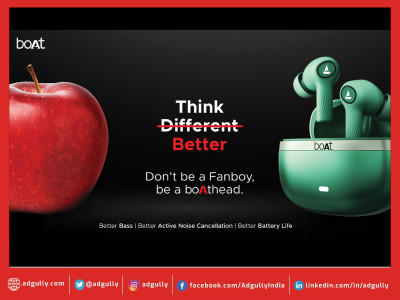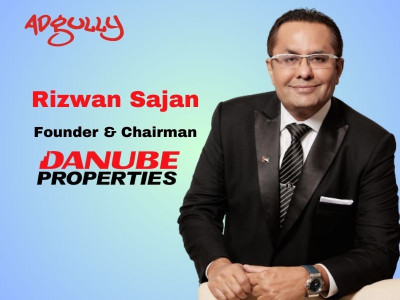Post Unlock 2.0, OOH has been seeing a big revival and how
Back in 2020, at a time when work from home had just begun and the roads and streets went silent, Out of Home (OOH) advertising was the most impacted industry for major reasons. Now, as we go into the Unlock 2.0, eventually, most of the population has been vaccinated and people are feeling much more safe to go around, travel, shop and a lot more. After almost 2 years of being in a strict Lockdown, as everything is almost open and normal, freedom of going outdoors is back and that is the biggest reason for the revival of OOH. Advertising and activations at airports, malls, cinemas, metro rail systems are seeing an uptick and marketers are quite bullish on their projections for the near future. Brands too have started coming on board with big releases of blockbuster movies, upcoming shows like The Big Picture, Bigg Boss Season 15, real estate gearing have already made OOH owners and agencies breathe a sigh of relief. The footfall on the streets is amplifying which has, in turn, allowed brands to leverage and communicate with the consumers as people are no more backing off to get out and follow the protocols instructed by the government for COVID-19.
According to GroupM India’s ‘This Year, Next Year (TYNY) 2021 report’, India will see a major ad recovery in 2021 after the downfall of ad spends in 2020 due to the pandemic. The report further states that India’s advertising investment is about to reach an estimated Rs 80,123 crore this year, which represents an estimated growth of 23.2%, for the calendar year 2021.
India is the 2nd fastest growing market in the top 10 countries and will be the 6th largest contributor to incremental ad spends in 2021 globally. While India was ranked 9th in the global ad spend rank in 2019, it dropped to the 10th spot in 2020 and is likely to regain its 9th rank this year, the GroupM report predicts.
Among all the media, out of home (OOH) was the hardest hit by the pandemic, with the lockdowns bringing the entire country to a halt and the streets becoming devoid of any traffic or crowds. However, with Unlock 2.0 earlier this year, the OOH sector is seeing a revival. Commenting on this, Dipankar Sanyal, CEO, Platinum and MRP, said, “After Unlock 2.0, the OOH market has revived significantly. It can be said of both the urban and rural sectors. We saw a significant rise in traffic on key arterial routes, traffic at shopping areas, pharmacies, parks and on public transport. These places were showing higher-than-pre-COVID-19 levels of movement. Commercial areas showed slightly lower traffic movement than the pre-COVID-19 days. All in all, traffic movement at various touch points were appreciably higher, which helped in growing the confidence of the advertisers to spend outdoors. Malls are still garnering significantly lower traffic and multiplexes have just opened, hence they have not been a key contributor. Traffic at airports, railway stations grew month on month, which saw a slew of brands flocking the airports. With this background as per our study of Madison Adex, we found that the market was operating at 77% of the pre-COVID-19 level of spends for the period January to September 2021. Data, rates and measurability are three factors which will spur the spending of outdoors as more and more touchpoints start garnering more footfalls.”
Atul Shrivastava, ED & CEO, Laqshya Media, added here, “In terms of the format, OOH is completely different from all other formats, which are restricted to at home or closed doors. OOH advertising is synonymous with Freedom. No other format could have offered the feeling of breathing in freedom while noticing an advertisement and clients are very quick to be back on OOH to get the guaranteed OTS (opportunity to see). Brands that have relevance and boldness in their creativity have always been the ones to profit most from OOH. There have been multiple studies showing how much engagement brands get from outdoor advertising compared to the other mediums that gave them ROI in the lockdown. Gradually, everything is going back to normal. We don’t have to choose between the normal we had before and the normal we had in the pandemic. People have started going out, going to offices and malls and theatres and restaurants. As the world retains its normality, OOH, once again, will be the preferred path for advertising. It has been extremely profitable before and soon; it will be even more profitable.”
Commenting on the reason behind brands returning to OOH, Times OOH’s Chief Strategy Officer Aman Nanda, noted, “OOH will remain an integral part of an advertiser’s arsenal. Research has shown that OOH, coupled with other media, leads to higher recalls and better influence of the path to purchase. The larger-than-life format also supports and enhances certain types of industries like real estate. It is also the only medium to provide true brand engagement with the consumer through activation, sampling, etc.”
Sanyal explained, “OOH delivers – for some categories it does more and for some it does less, but at an overall level it does deliver. Print and TV were always there. Digital for the last 10 years has been growing. Inspite of that if you look at the 2019 figures, Outdoor stood at 6% of the overall pie and that’s kind of static for quite some time. Hence, one can safely conclude that no matter what, some categories and brands have immense faith in OOH and hence, it has been able to maintain a steady share. Now, agencies like Madison have developed their own set of tools, invested in data and have developed various measurement matrices to say that OOH delivers. Just to substantiate, let’s look at some of the key categories spent in OOH compared to 2019 for the January to September period. Real estate, which used to be around 16%, has grown to 24%, FMCG and financial services have grown from 11% to 15%, Media and Entertainment has grown from 5% to 7%, Automobiles have been steady at 6%, Organised retail spends have been relatively steady. Yes, the challenge will be there to bring the new age clients into the fold, but the way DOOH is proliferating, not only in ambient surroundings but in traditional OOH media, I am sure even they will come on board.”
Highlighting the outdoor medium, the GroupM’s report also predicts that the medium which fell to Rs 930 crore in 2020 will touch Rs 1,570 crore in 2021 with a growth rate of 69% CAGR. In 2019, the OOH ad spends stood at Rs 3,394 crore. Also, OOH will be merely 2% of total India’s ad spends this year.
GroupM South Asia’s CEO Prasanth Kumar in a release issued said, “2020 was an unprecedented year. The pandemic impacted across sectors and it, therefore, affected the media investments too. As we are aware, the year that went by had a mixture of lockdowns, many restricted market momentum and overall threw a challenge and impacted multi-industry economies. The ad industry, too, had its challenges and 2020 witnessed a steep drop in the overall media investments. However, we have witnessed a month-on-month upturn in the industry starting Q3 last year and we are quite optimistic about the revival that 2021 will see. With the gradual easement of the lockdown backed by seasonal spends and big-ticket events like IPL, we expect 2021 to continue to build on that momentum. While the global ad spends are estimated to see a rise of 10% in 2021, digital is expected to take 67% of ad spends. With the help of technology, marketers have adapted to pandemic-proof ways by constantly innovating, staying relevant and offering digitally charged solutions to brands.”
Speaking about the Metro & Transit advertising picking up after Unlock 2.0, Nanda observed, “With business and leisure travel increasing every day, the traffic at airports are nearly at pre-COVID-19 levels. Intercity travel on Metro rails is also almost at pre-pandemic levels. So, advertisers are keen on being present there in a big way. We are very optimistic about the next few months and hope to support our clients with new and innovative ways to reach their audiences.”
“Metro and Transit are very important parts of the OOH Industry and are led by Airport advertising. Innovations are an integral part of the OOH industry – both in terms of Creative Innovation or even Format innovations. Every OOH agency is proposing innovations to their clients and many OOH innovation specialised agencies have emerged and are doing a good job. We are going to see more and more spectacular innovations in OOH regularly,” said Laqshya Media’s Shrivastava.
“Now, as people have started going out, the recovery has been quick – quicker than we expected. OOH is already claiming its original share of investment that brands make for advertising, though the losses during the lockdowns will impact the balance sheets this financial year as well. The measures taken by the OOH industry include rate correction, refurbishing structures, consolidation of offerings and many more,” he further added.
Elections are near and political parties are big spenders on OOH. Commenting on the revenue boost for OOH during this period, Sanyal explained, “Yes, election campaigns do bring in a lot of spends for OOH. Since these are Assembly elections, the state’s OOH industry gets a boost. Election campaigns generally use all forms of OOH media, hence right from the local fabricators to large media owners everybody gains.”
Digital OOH
Digital OOH has always been a promising part of the OOH market. It has always kept the OOH space interesting and it has always helped in engaging the audiences. The pandemic did pause everything for a bit, but as everything is getting back to normal, digital OOH is already thriving. According to the experts, soon we’ll be able to experience the next level of Digital OOH like augmented reality, virtual reality and infusion of new technologies.
According to Nanda, “Digital OOH is here to stay and the medium is a popular one with advertisers. It offers dynamic visuals and engaging content to the itinerant Indian, especially at airports and metro rails, where the dwell time is high. And, with programmatic OOH, the advertiser has much more flexibility in planning the campaign. This is what will take DOOH to the next level.”
Sanyal noted, “Digital OOH is proliferating. As I have mentioned earlier, it’s not restricted to malls/ multiplexes, airports and stations only, it’s been adopted on the traditional OOH media like billboards and bus shelters. This is happening in all the metros and mini metros. This phenomenon will only grow and augur well for the OOH industry.”
Speaking about the kind of advertisers that are active on OOH, Shrivastava noted, “Almost every major category is active on OOH, be it Automobile or Mobile handsets or OTT or M&E or Real Estate, Jewellery, BFSI or even E-Commerce. These categories traditionally believe in the power of OOH and have always found the desired ROI on OOH. Media & Entertainment is of course a regular spender on OOH.”
According to Nanda, “The key advertisers on OOH were WhatsApp, Samsung India, Apple, CP Plus, Total Energies, Ministry of Tourism, Apollo Tyres, Greenply, Volkswagen, Bisleri, LIC among others. Healthcare and pharma have been added to this list in the last year for obvious reasons. Also, as production and releases of new shows and movies resume, and cinemas reopen, we are seeing a strong comeback of the entertainment industry as well.”
While in 2020, advertising has been a major concern for brands as well as advertising agencies. 2021 has seen brands aggressively advertising on OOH, while some gained negative publicity and some gained positive. A very recent campaign launched by Square Yards used sexual innuendos and call-to-action phrases against a yellow backdrop for the billboards, which got all the negative publicity. These billboards were placed in the prime areas of target cities to evoke as much response from prospective customers. Though the campaign didn’t pull out well, some users still called it ‘eye-catching and bold’.
“Bold is the new sexy! Definitely an eye-catching creative. Advertising done right”, wrote one user. “Advertising only raw rule is to draw attention – conversion is the role of product/ services offered. Suddenly I remembered the ‘Axe Ad’, which made a 1,000 bikini (clad women) run after a guy using it! Great work!” another user said.
Speaking on the impact, Kanika Gupta Shori, Founder and COO at Square Yards, wrote in a LinkedIn post, “After the campaign, traffic on its website surged 5x. At any point, more than 4,000+ users were concurrently searching squareyards.com and its site crashed because of high volume for a few minutes. The start-up had already become the largest listings portal in India with 1 million+ listings, and 35,000+ monthly active brokers (all within just 12 months of launch).”
“Now it’s time to set some disruption on consumer experience and traffic. For too long Indian real estate consumers have been middling with poor search quality and fake listings – time to change that,” she added.





















Share
Facebook
YouTube
Tweet
Twitter
LinkedIn